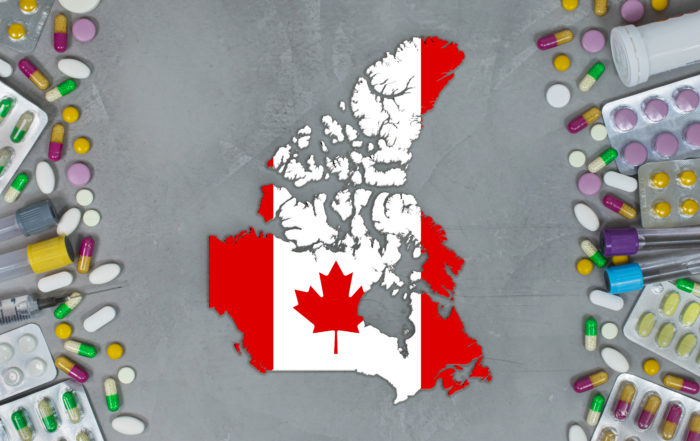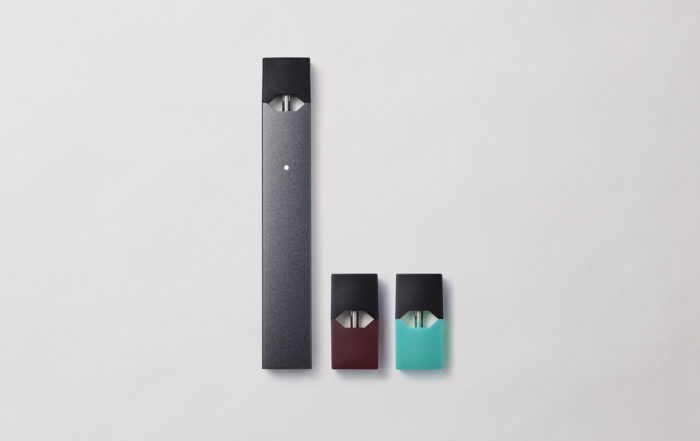
FDA Drug Manufacturing Oversight During Covid-19: The GAO Report on the Inspections Backlog and Steps FDA is Taking to Address It
By Madeleine Giaquinto, Kalah Auchincloss, and Cynthia Schnedar
To date, restrictions put in place in light of the COVID-19 pandemic continue to impact the ability of the Food and Drug Administration (FDA or the agency) to inspect drug manufacturing facilities, which has generated a growing backlog of inspections, as well as a range of backlog-related concerns expressed by both the pharmaceutical industry (Industry) and Congress. Consequentially, on March 4, 2021, a Subcommittee of the U.S. House of Representatives’ Committee on Appropriations held a hearing to better understand the inspections backlog and what could be done to address it.
The focus of this hearing was the January 28, 2021 report by the Government Accountability Office (GAO) entitled COVID-19: Critical Vaccine Distribution, Supply Chain, Program Integrity, and Other Challenges Require Focused Federal Attention (the GAO Report).[1] The GAO Report provides insight into the depth of inspectional challenges faced by FDA during COVID-19, as well as possible next steps the agency could take to address these challenges. Testimony given by GAO Health Care Director Mary Denigan-Macauley at the hearing offered an update to the earlier more detailed findings conveyed in the GAO Report.[2] In addition, GAO more recently reiterated the importance of the GAO Report recommendations regarding FDA drug manufacturing inspections through release of a new document called Priority Open Recommendations to the Department of Health and Human Services (HHS) (Priority Recommendations).[3] In this latest update, GAO acknowledged that while FDA has made some improvements in its inspection planning process, FDA must continue to ensure that its inspection plans for future years “identify, analyze, and respond to the issues presented by the backlog of inspections that could jeopardize the goal of risk-driven inspections.”[4]
Since publication of the GAO Report and corresponding congressional testimony, FDA has released two other noteworthy documents related to inspections. First, on April 14, 2021, FDA released a guidance entitled Remote Interactive Evaluations of Drug Manufacturing and Bioresearch Monitoring Facilities During the COVID-19 Public Health Emergency, which introduced a new tool for conducting remote inspectional work during the pandemic.[5] Second, on May 5, 2021, FDA issued its Resiliency Roadmap for FDA Inspectional Oversight to provide further transparency around adaption of the agency’s inspectional work during the pandemic.[6]
In this article, we first review GAO’s most recent findings on the state of the inspections backlog and its causes. We then review GAO’s recommendations to FDA on addressing the backlog and FDA’s response to those recommendations. Last, we review recent FDA efforts to address the backlog and potential permanent changes FDA may make going forward regarding oversight of drug manufacturing facilities.
GAO’s Findings on the State of the Drug Manufacturing Inspections Backlog and its Impact on FDA Oversight
In March 2020, as the spread of COVID-19 became an established threat around the world, FDA suspended most foreign[7] and domestic[8] inspections of facilities that manufacture drugs intended for the U.S. market, continuing only with its “mission critical” activities. In July 2020, on-site, prioritized domestic inspections resumed, but only on a limited basis (i.e., depending on the local risk of COVID-19 infection), meaning that the agency’s on-site inspections capability remained very limited.[9]
Even before the current pandemic, GAO had existing “long-standing concerns about FDA’s ability to oversee the increasingly global pharmaceutical supply chain.”[10] GAO reported that prior to COVID-19, FDA conducted pre-approval, surveillance, and for-cause inspections at all facilities that manufacture drugs intended for the U.S. market, amounting to about 1,600 inspections of approximately 4,200 facilities each year. Close to 60% of these facilities were located overseas, a third of which were in China and India.[11] Given the backlog created by COVID-19, the GAO Report made clear that FDA now faces an even bigger challenge in overseeing the global pharmaceutical supply chain.
GAO Found a Sizeable Backlog of FDA Inspections
Notably, FDA’s inspection metrics for 2020 pale in comparison to the same metrics reported in previous years. GAO reported that FDA was unable to complete more than 1,000 of its planned inspections in Fiscal Year (FY) 2020,[12] leaving the total number of inspections of foreign and domestic facilities 56% lower than each of the previous two fiscal years.[13] For domestic facilities, FDA conducted 52 inspections between March and October 1, 2020, but conducted about 400 inspections during the same time period in each of the two previous years. Foreign facilities experienced an even more drastic decrease, with FDA conducting only three inspections between March and October 1, 2020, compared to more than 600 inspections during the same time period in each of the previous two years.[14]
GAO Found That the Inspections Backlog May Lead to Future Delays in Drug Approvals
In addition to quantifying the backlog, GAO expressed concerns that the agency will face challenges in carrying out its preapproval and surveillance oversight responsibilities in the future if the inspections backlog remains unaddressed. Specifically, the GAO Report noted that while FDA has not yet experienced serious delays in meeting user fee goal dates, the impact on approvals from delayed inspections may become more evident in the future.[15]
While FDA reported that it was operating above its 90% on-time action performance goal for approval decisions as of November 2020, the GAO Report noted that the inspections pause had not yet had a significant impact on the agency’s drug approval performance, because preapproval inspections typically occur months in advance of approval. Additionally, GAO noted that two of the Industry associations it spoke with expressed concern about this issue. Consequentially, GAO concluded that “[a] continued pause in preapproval inspections may lead to future delays in FDA drug approvals.”[16]
GAO Found That the Inspections Backlog May Require FDA to Alter Its Risk-Based Inspection Model for Surveillance Inspections
FDA conducts surveillance inspections according to a risk-based model that prioritizes the highest risk facilities for inspection in any given fiscal year, based on mandatory factors (sites that have never before been inspected or have not been inspected within the last five years) and other risk-based factors such as type of drug manufactured, length of time since last inspection, and previous compliance history.[17] As noted above, FDA was unable to complete more than 1,000 of the approximately 1,500 planned surveillance inspections for FY20. These inspections will roll over into the site selection model for future fiscal years; thus, GAO found that the backlog could potentially threaten FDA’s “strategic goal of shifting toward exclusively risk-driven surveillance inspections” if the agency does not make changes to the model.[18]
GAO Found That FDA’s Current Use of Alternative Tools is Not a Comprehensive Solution to Addressing the Inspections Backlog
GAO also noted that to keep up with some of its inspectional work during COVID-19, FDA adopted a range of alternative tools, such as use of inspections conducted by foreign regulators, use of statutory authority to request and review facility records remotely, and use of sampling and testing drug products imported from foreign manufacturers. GAO reported that despite FDA’s vastly expanded use of such tools, this was not enough to avoid a backlog of mandatory on-site inspections. The GAO Report discussed each of these alternative tools and the concerns related to their longer-term utility.
FDA Use of Information From Inspections Conducted by Foreign Regulators
The first tool reviewed by GAO was use of information from inspections conducted by foreign regulators. GAO reported that FDA found information from inspections conducted by foreign regulators statutorily satisfies FDA inspectional requirements in some instances, but not in all. For example, inspections conducted in Europe by the 28 European regulators privy to the Mutual Recognition Agreement (MRA) have been deemed an acceptable substitute for an FDA inspection. Additionally, in light of COVID-19, FDA expanded recognition to inspections conducted outside of Europe by European regulators under the MRA, but only for 19 out of the 28 European regulators. No framework similar to the MRA exists to extend formal recognition of inspections conducted by regulators among the Pharmaceutical Inspection Cooperation Scheme (PIC/S), including Australia, Canada, Japan, and South Africa. Thus, information from inspections conducted outside of Europe by the other nine European regulators and by PIC/S members can only be used for purposes of “surveillance-level oversight” to inform the risk-based site selection model and are not acceptable substitutes for an FDA inspection. Moreover, like FDA, all relevant foreign regulators have also slowed their foreign inspection programs during COVID-19, limiting the ability of any regulatory authority to engage in on-site inspections.
Furthermore, FDA is most in need of information about facilities located in China and India; FDA conducted more inspections than any other foreign regulator in those countries prior to COVID-19. These countries, however, are not party to the MRA or other reliance agreements. Thus, although information from European and certain other foreign regulator inspections can substitute for FDA inspections, this information is either not available or does not qualify as a sufficient substitute for all needed inspections.
FDA Use of Records Requests “in Advance of or In Lieu of” an Inspection
The second tool reviewed by GAO, and the tool on which FDA relied most heavily during the pandemic, was use of FDA’s authority to request records from facilities “in advance of or in lieu of” an inspection under Section 704(a)(4) of the Federal Food, Drug, and Cosmetic Act (FD&C Act). A records request is not an inspection, but FDA was able to satisfactorily assess the compliance status of many facilities named in drug product applications by reviewing their records, and thus, was able to meet many user fee goal dates. However, FDA told GAO that “only FDA in-person inspections and European regulator reports can satisfy the Agency’s statutory requirements for surveillance reports.”[19] GAO concluded that this tool has limited capability in mitigating the backlog of surveillance inspections, unless FDA’s statutory authority is expanded or interpreted to include use of records requests as a true substitute for surveillance inspections (as opposed to merely providing supplemental information in advance of such an inspection to inform FDA’s risk-based site selection model).
FDA Use of Information from Sampling and Testing of Product Obtained at the U.S. Border
The last tool reviewed by GAO was FDA’s sampling and testing of drug products obtained at the U.S. border. GAO noted that FDA adjusted use of this tool during the pandemic to specifically target high risk drugs manufactured at foreign facilities where inspections had been postponed. Significantly, FDA pointed out that sampling and testing alone will not confirm if a manufacturing facility is meeting quality standards. Thus, this tool can only supplement an FDA inspection, but can never act as a substitute for one.
GAO’s Recommendations to FDA for Improving Its Drug Manufacturing Oversight
The GAO Report made two recommendations intended to help FDA adapt its inspections program to most effectively carry out its drug manufacturing oversight responsibilities.
GAO Recommendation to Assess Use of Alternative Inspection Tools
GAO recommended that FDA “fully assess the agency’s alternative inspection tools and consider whether these tools or others could provide the information needed to supplement the agency’s regular inspection activities or help meet its drug oversight objectives when inspections are not possible in the future.”[20] Although listed second in the GAO Report, this recommendation captured the interest of Industry and Congress.
GAO observed that while FDA has substantially increased its use of Section 704(a)(4) records request authority, “the agency has not yet finalized a policy for how it can use this information to supplement its inspection activities.”[21] Note, however, that on January 29, 2021, one day after the GAO published its report, FDA issued revised guidance outlining its new interim process for communicating issues identified following a Section 704(a)(4) records request issued “in advance of or in lieu of” a pre-approval inspection.[22] The revised guidance also provides information about FDA’s expanded recognition practice under the MRA, as discussed earlier, which includes use of European regulators’ inspection reports for facilities located outside of Europe.
GAO also noted that “FDA has not assessed whether inspections conducted by PIC/S members are equivalent to FDA inspections.”[23] GAO did not explicitly address any of the difficulties FDA would face in trying to implement a mutual recognition framework with those authorities. However, the report acknowledged that such an assessment would not be a quick solution, noting that it took FDA five years to complete a capability assessment of each European regulator in order to establish the MRA in the first place. We also note that in addition to the five-year timeline that accrued when conducting capability assessments in initial development of the MRA, the MRA also required a years-long negotiation between FDA and European regulators before assessments could even begin. Thus, while there may be agreement as to the concept, establishing additional mutual recognition agreements with other regulators could take many years to implement.
Most significantly, GAO recommended that FDA assess whether there are “additional tools” the agency should be using, specifically pointing to virtual inspections. GAO reported that four of five Industry associations it spoke with mentioned successful implementation of virtual inspections by foreign regulators, explaining that these regulators have used a range of virtual technologies to remotely conduct facility inspections. FDA reported to GAO that “the agency is in the process of assessing the potential use, including its authority to use, other tools to serve as supplements to FDA inspections, including using remote video and other remote and live interactions with establishment staff and records to evaluate drug manufacturing operations.”[24]
GAO Recommendation to Develop a Plan for Addressing the Inspections Backlog
Second, GAO recommended that FDA ensure “inspection plans for future fiscal years identify, analyze, and respond to the issues presented by the backlog of inspections that could jeopardize its goal of risk-driven inspections.”[25] In particular, GAO explained that FDA should adapt the risk-based model it uses to select inspection sites in order to loosen its definition or prioritization of “mandatory surveillance inspection.” FDA’s model, as of the date of the GAO Report, defined never-inspected facilities or facilities not inspected within the past five years as “mandatory surveillance inspections” because they present significant risks to pharmaceutical quality.[26] Historically, FDA has prioritized mandatory surveillance inspections and used its remaining resources for inspections of other high risk facilities identified through the risk-based model. [27] In its report, GAO expressed concern that unless more resources are allocated to the drug inspection program, the backlog of mandatory surveillance inspections would “dominate” FDA’s surveillance inspection program, creating a situation where other high risk facilities would not be inspected.[28]
Recent FDA Efforts Aimed at Addressing the Drug Manufacturing Inspections Backlog and Possible Longer-Term Oversight Changes
FDA made clear in its response to GAO that it would consider both recommendations as it assesses how to address the inspections backlog, although its ongoing pandemic response, and preexisting statutory and resource limitations, continue to burden implementation of significant change. Significantly, since release of the GAO Report in January and GAO congressional testimony in March, FDA has issued two documents that provide further transparency around how it will address inspectional concerns highlighted in the GAO Report. We review those documents below.
FDA Announces a New Tool Called Remote Interactive Evaluations
On April 14, 2021, FDA released a guidance entitled Remote Interactive Evaluations of Drug Manufacturing and Bioresearch Monitoring Facilities During the COVID-19 Public Health Emergency, introducing a new tool for conducting remote inspectional work during the pandemic.[29] In the guidance, FDA describes a Remote Interactive Evaluation (RIE) as “any combination of [various remote] interactive tools” used to evaluate a drug or biologic manufacturing facility.[30] RIEs apply to all drug inspection programs, including pre-approval or pre-licensing inspections; post-approval, routine surveillance inspections; follow-up and compliance inspections; bioresearch monitoring (BIMO) inspections; and inspections of 503B outsourcing facilities.
Importantly, however, RIEs are not outright inspections, and thus, the start and close of an RIE will not trigger issuance of FDA Form 482s and Form 483s. RIEs are instead intended to provide information to meet user fee commitments, update FDA’s relevant internal databases, and inform the risk-based surveillance inspection site selection model. FDA will follow several similar inspection procedures in carrying out an RIE, such as holding closeout meetings and providing a written list of observations in which the facility will have 15 business days to respond. FDA will also issue final “remote interactive evaluation reports” in closing out an RIE.[31]
RIEs are meant to complement other remote tools used by FDA during the pandemic. For example, an RIE may precede a request for information, possibly under Section 704(a)(4), in order to most efficiently conduct the RIE.[32] Additionally, FDA will apply “risk management tools” to determine the need to conduct an RIE, similar to its approach taken with respect to other types of evaluations throughout the pandemic.[33]
FDA’s adoption of virtual technologies as a component of RIEs and other remote evaluations is encouraging news for Industry, which sees this approach as a more meaningful way to address the inspections backlog. However, since FDA caveated in discussions with GAO, as well as in the RIE guidance, that any remote evaluation is not a substitute for an on-site inspection under its current statutory authority, questions still remain as to how the agency will manage the inspections backlog in the longer-term. These questions will likely persist across Industry until more information is provided.
FDA Publishes Its Resiliency Roadmap for FDA Inspectional Oversight Moving Forward
On May 5, 2021, FDA issued a report entitled Resiliency Roadmap for FDA Inspectional Oversight (the Resiliency Roadmap).[34] This report, which covers inspectional activities for all FDA-regulated commodities, provides updated information regarding FDA’s inspectional activities during the pandemic and a roadmap for how it intends to prioritize its inspectional work as the pandemic continues.
Of particular interest, FDA provided updated statistics regarding delayed applications. According to the Resiliency Roadmap, FDA received more than 13,500 applications for all medical product approval/authorization between March 2020 and March 2021, and determined that of those applications, approximately 600 needed inspectional oversight of some type before action could be taken on the application.[35] FDA reported that only 48 drug products were delayed solely because a GMP inspection could not be conducted. FDA noted that only six of the 48 delayed products were considered mission critical and that it had scheduled the inspections for those six mission critical products to occur by September 30, 2021.[36]
FDA also reported on its queue of for-cause domestic inspections that are follow-up compliance actions after a previous domestic inspection resulted in “official action indicated” (OAI) classification. FDA reported that it was able to complete 90% of these OAI follow-up inspections in FY20 and noted that it had 79 OAI follow-up inspections still to be conducted for human and animal drug domestic facilities in FY21.[37] However, FDA did not provide any statistics related to the number of OAI follow-up for-cause inspections in its queue for foreign inspections.
For surveillance inspections, FDA indicated that it was able to use remote tools to provide oversight on the relative risk of some establishments. As a result, when reassessing facility risk to create the surveillance site selection list for FY21, some facilities that were included in the FY20 model are no longer included in the FY21 model.[38] FDA did report that it had 857 remaining surveillance inspections for drug facilities planned for FY21, with the majority being domestic facilities.[39]
In addition to providing inspectional statistics during the pandemic, the Resiliency Roadmap also includes an outline of FDA’s plans for conducting inspections going forward, while noting that these plans will depend heavily on the course of the COVID-19 pandemic. In general, FDA will first conduct mission critical inspections (Tier 1) and then prioritize PAI/PLI inspections and for-cause inspections (Tier 2).[40] Lower priority inspections that do not meet these criteria (Tier 3) may be postponed, which could include some routine surveillance inspections. FDA said that it will continue to use risk-based measures going forward, with longer intervals occurring between non-priority surveillance inspections. FDA is clear that the volume of surveillance work presents a significant challenge even in the best case scenario, and that as a result, FDA will continue to use remote alternative tools whenever possible.[41]
Notably, the workload estimates focus on domestic inspections and the small number of foreign inspections that can be accomplished by in-country FDA investigators, assuming that FDA will continue to prioritize mission critical foreign inspections, but that travel restrictions and other limitations will prevent FDA travel for foreign routine surveillance inspections. FDA also assumes that foreign authorities will conduct 25% of remaining medical product inspections.[42]
Conclusion
In sum, the GAO Report captured concerns about the impact of the pandemic on FDA’s inspections backlog and the risk it poses to the agency’s oversight capabilities in the foreseeable future. Congressional testimony, as well as mounting calls from Industry, set the stage for FDA’s recent adoption of certain additional oversight tools, as well as its longer range plans for use of other tools with more complex implementation requirements. FDA has made significant progress in implementing the GAO recommendations with its use of more innovative inspection alternatives, such as RIEs and the increased transparency provided in the Resiliency Roadmap. GAO subsequently acknowledged that FDA made some improvements, but reiterated its concern that FDA should continue to prioritize addressing inspection delays caused by the pandemic. Thus, while FDA’s adoption of some additional tools to address the inspection backlog has been positively received, all eyes still will remain on FDA as it moves forward with implementing its use of these new tools and potentially adopts newer approaches to its drug manufacturing oversight in the future.
[1] GAO Report, “COVID-19: Critical Vaccine Distribution, Supply Chain, Program Integrity, and Other Challenges Require Focused Federal Attention” (January 2021), available at https://www.gao.gov/assets/gao-21-265.pdf. This report was the GAO’s fifth installment in its series of reports to fulfill the mandate imposed by the CARES Act to monitor and report on the federal response to the coronavirus pandemic (COVID-19).
[2] Statement of Mary Denigan-Macauley, Testimony before the Subcommittee on Agriculture, Rural Development, Food and Drug Administration, and Related Agencies, Committee on Appropriations, House of Representatives, “Drug Safety: FDA’s Future Inspection Plans Need to Address Issues Presented by COVID-19 Backlog” (March 2021), available at https://www.gao.gov/assets/720/712761.pdf.
[3] GAO, “Priority Open Recommendations to the Department of Health and Human Services” (May 2021), available at https://www.gao.gov/assets/gao-21-527pr.pdf.
[4] Id.
[5] FDA Guidance, “Remote Interactive Evaluations of Drug Manufacturing and Bioresearch Monitoring Facilities During the COVID-19 Public Health Emergency” (April 2021), available at https://www.fda.gov/media/147582/download.
[6] FDA Report, “Resiliency Roadmap for FDA Inspectional Oversight” (May 2021), available at https://www.fda.gov/media/148197/download?utm_medium=email&utm_source=govdelivery.
[7] See supra note 1 at 150, citing “Coronavirus Disease 2019 Update: Foreign Inspections” (March 2020), available at https://www.fda.gov/news-events/press-announcements/coronavirus-disease-2019-covid-19-update-foreign-inspections.
[8] See supra note 1 at p. 151, citing “Coronavirus Update: FDA Focuses on Safety of regulated Products While Scaling Back Domestic Inspections” (March 2020), available at https://www.fda.gov/news-events/press-announcements/coronavirus-covid-19-update-fda-focuses-safety-regulated-products-while-scaling-back-domestic#:~:text=Today%2C%20we’re%20announcing%20that,domestic%20routine%20surveillance%20facility%20inspections.
[9] Id., citing “Coronavirus Update: FDA prepares for resumption of domestic inspections with new risk assessment system” (July 2020), available at https://www.fda.gov/news-events/press-announcements/coronavirus-covid-19-update-fda-prepares-resumption-domestic-inspections-new-risk-assessment-system.
[10] Id. at p. 148.
[11] Id. at p. 149.
[12] Id. at 155.
[13] Id. at p. 149.
[14] Id. at p. 151.
[15] Id. at p. 154–55.
[16] Id. at p. 155.
[17] Id.
[18] Id.
[19] Id. at p. 154.
[20] Id. at Executive Summary.
[21] Id. at p. 157.
[22] FDA Updated Guidance, “Manufacturing, Supply Chain, and Drug and Biological Product Inspections During COVID-19 Public Health Emergency Questions and Answers” (January 2021), available at https://www.fda.gov/media/141312/download.
[23] See supra note 1 at p. 157.
[24] Id.
[25] Id. at Executive Summary.
[26] Id. at p. 155.
[27] Id.
[28] Id. at p. 156.
[29] See supra note 5.
[30] Id.
[31] Id.
[32] Id.
[33] Id.
[34] See supra note 6.
[35] The 13,500 applications included human drugs, animal drugs, devices, biologics, BIMO, and tobacco. FDA did not breakdown the number of applications by commodity.
[36] See supra note 6 at p. 8.
[37] Id. at p. 9.
[38] Id. at p. 11.
[39] Id. at p. 12.
[40] Id. at p. 13–15.
[41] Id.
[42] Id.
Update Magazine
Summer 2021










